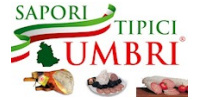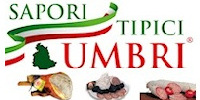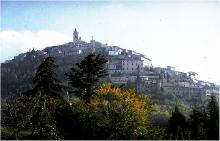 |
| Veduta di Trevi |
The portico of this building is 15th century, while the building itself dates back to a century previously. The Renaissance windows of the first floor feature warnings to the city's governors carved in the architraves. Commemorative plaques were added in the 19th century and the interiors of the building were refurbished. The Piancoteca Civica used to be housed here before it was moved to the convent of San Francesco.
The Pinacoteca Civica can be reached from Piazza Mazzini along Via San Francesco and Palazzo Valenti (1545), one of the many palazzi that once belonged to this influential family that took an active part in the administration of the Papal States. The fine doorway and windows of this palazzo are Renaissance.
The church of San. Francesco dates back to 1288 but was altered in the Gothic style between 1354 and 1358. The Gothic entrance leads into a single-nave interior with three cross-vaulted apses. The central apse is polygonal in construction and contains an early 14th century painted wooden Crucifix in the manner of Giotto by an unknown painter from Trevi. The right hand apse contains a sepulchre with the remains of the hermit Beato Ventura, who died in 1310. The left hand apse contains a rare polychrome sepulchral stele that is the tomb of Valente Valenti, from 1357. Among the 15th century votive frescoes and 18th century altars of the left hand nave there is an imposing 1509 organ.
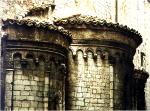 |
| Particolare della Cattedrale di S. Emiliano |
A series of winding streets lead to the cathedral of Sant'Emiliano. Built in the 12th century, the intricately worked Romanesque apses stand out from the main body of the church, which was enlarged in the 14th century and underwent further modifications in the 19th century. The highlight of the three-nave interior is certainly the rich decoration of the Sacrament altar by Rocco di Tommaso (1522). The church is consecrated to the first bishop of Trevi, the Armenian Milianus (that later evolved into Emiliano), martyred in 304.
The Duomo faces directly towards the 15th century Renaissance facade of Palazzo Lucarini, that evens out the marked drop between Via del Duomo and Via Dogali beneath. Today this building houses the Flash Art Museum, a permanent collection of contemporary Umbrian, Italian and non-Italian artists.
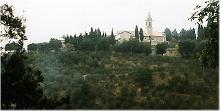 |
| Convento e Chiesa di S. Martino |
